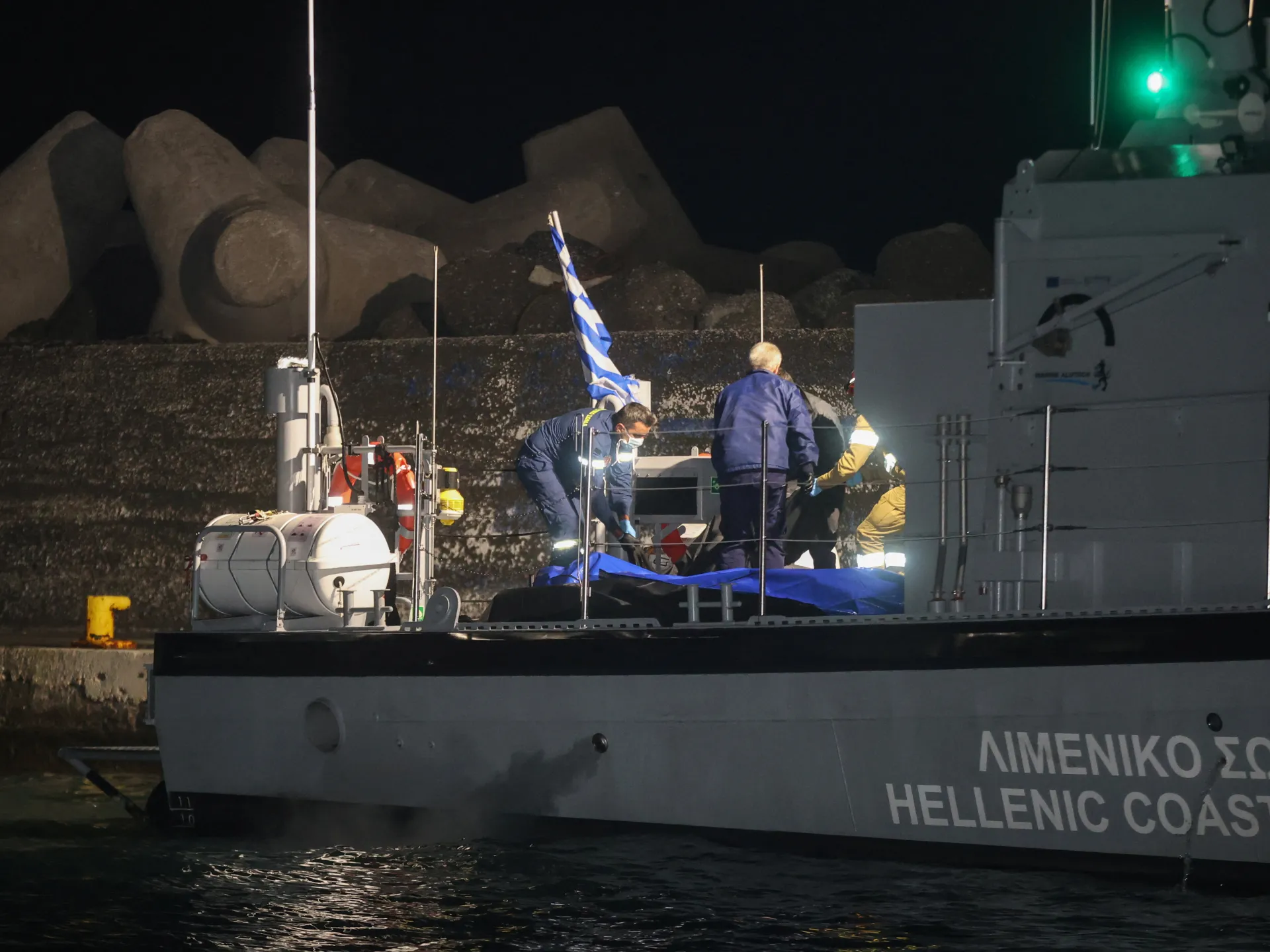Bodies of 17 people found in boat off of Greece’s Crete | Refugees News
Greek coastguard says two survivors in critical condition have been hospitalised.
Published On 7 Dec 2025
The bodies of at least 17 migrants and asylum seekers have been found in a partially deflated boat off the Greek island of Crete, according to the country’s coastguard.
The victims, as well as two survivors, were discovered on Saturday, some 26 nautical miles (48km) southwest of Crete.
Recommended Stories
list of 4 itemsend of list
A spokeswoman for the Greek coastguard told the AFP news agency that all of the victims were men.
“Two survivors in critical condition have been hospitalised,” the spokeswoman added. “Autopsies have to be carried out as the circumstances of the sinking are not known.”
The Athens News Agency reported that the boat was spotted by a Turkish cargo ship, which alerted the authorities. The Greek coastguard rushed two vessels to the scene, while the European Union’s border agency Frontex sent a boat, an aircraft and a Super Puma helicopter to help in the rescue effort.
The coastguard said that the two survivors had said their vessel had become unstable because of bad weather, and they had no way to cover up, nor to eat or drink anything.
The boat had also been taking on water when it was discovered.
Manolis Frangoulis, the mayor of Cretan port Ierapetra, told reporters that all the victims had been young.
“The vessel the migrants were on was deflated on two sides, which forced the passengers into a reduced space,” he added.
Coroners are looking at the possibility that the migrants died of dehydration, Greek state television channel ERT reported.
Over the last year, migrants and asylum seekers have turned their attention to the Greek island of Crete, in the eastern Mediterranean Sea, as a way of reaching EU territory from Libya, in North Africa.
According to the United Nations refugee agency, UNHCR, more than 16,770 people seeking asylum in the EU have arrived there since the start of the year.
In July, Greece’s conservative government, led by Prime Minister Kyriakos Mitsotakis, suspended asylum hearings for migrants, particularly targeting those arriving on Crete from Libya.
Libya has been gripped by conflict since the 2011 overthrow and killing of longtime ruler Muammar Gaddafi in a NATO-backed uprising.
